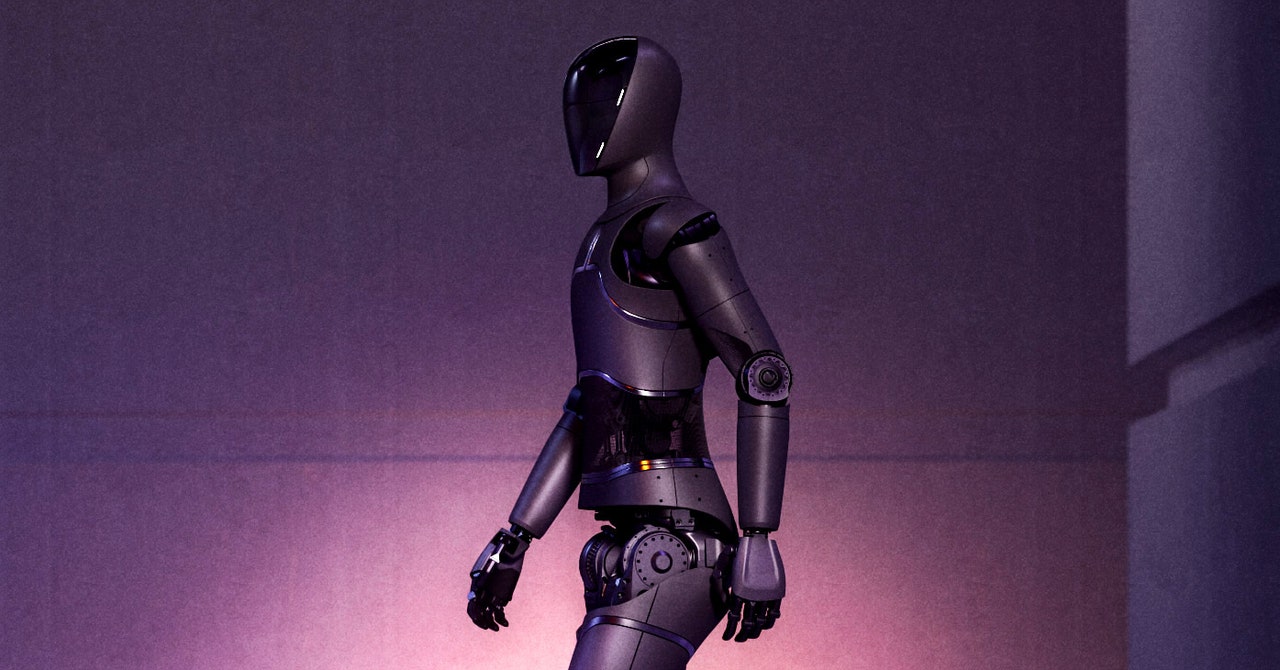eight years ago, the Pentagon’s Defense Advanced Research Projects Agency staged a painful-to-watch competition in which robots slowly struggled (and often failed) to perform a range of human tasks, including opening doors, operating power tools, and driving golf carts. Clips of them fumbling and stumbling through the Darpa Robotics Challenge quickly went viral.
DARPA via Will Knight
Today, the descendants of those unfortunate robots are much more capable and graceful. Several startups are developing humanoid creatures that they claim could find work in warehouses and factories within a few years.
Jerry Pratt, a senior researcher at the Institute for Human and Machine Cognition, a not-for-profit research institute in Florida, led a team that placed second in the 2015 Darpa Challenge. He is now a co-founder of Figure AI, a company that designed a humanoid robot for warehouse work that today announced $70 million in investment funding.
Pratt says if Darpa’s challenge were run today, robots could complete the challenges in about a quarter of the 50 minutes it took his robot to complete the course, with few mishaps. “From a technical point of view, a lot of enabling technologies have emerged recently,” he says.
More advanced computer vision, made possible by advances in machine learning over the past decade, has made it much easier for machines to navigate complex environments and perform tasks such as climbing stairs and grasping objects. Higher power density batteries, produced as a result of the development of electric vehicles, have also made it possible to put enough energy into a humanoid robot so that it can move its legs fast enough to dynamically balance, i.e. to stabilize itself when he slips or misjudges a step, as humans can.
Pratt says his company’s robot takes its first steps in a mock warehouse in Sunnyvale, California. Brett Adcock, the CEO of Figure, believes it should be possible to build humanoids at the same cost as making a car, provided there is enough demand to ramp up production.
If Adcock is right about that, the field of robotics is approaching a pivotal juncture. You probably know the dancing Atlas humanoid robots that have been collecting YouTube likes for several years now. Created by Boston Dynamics, a leg movement pioneer who built some of the humanoids used in the Darpa competition, they show that it is possible to create capable robots in the form of a human. But these robots were extremely expensive — the original Atlas cost several million dollars — and lacked the software necessary to make them autonomous and usable.
Apptronik Astra robot.Thanks to Apptronik
Figure isn’t the only company betting on humanoid robots coming of age. Others include 1X, Apptronik, and Tesla. Tesla CEO Elon Musk visited the original Darpa Robotics Challenge in 2015. The fact that he is now eager to build a humanoid of his own suggests that some of the technologies required to create such a machine are finally viable.
Jonathan Hurst, a professor at Oregon State University and co-founder of Agility Robotics, also attended the Darpa Challenge to demo a walking robot he built. Agility has been working on robots with legs for some time, but Hurst says the company has taken a physics approach to locomotion rather than copying the mechanics of human limbs. Although the robots are humanoid, they have legs that look like they were inspired by an ostrich.

